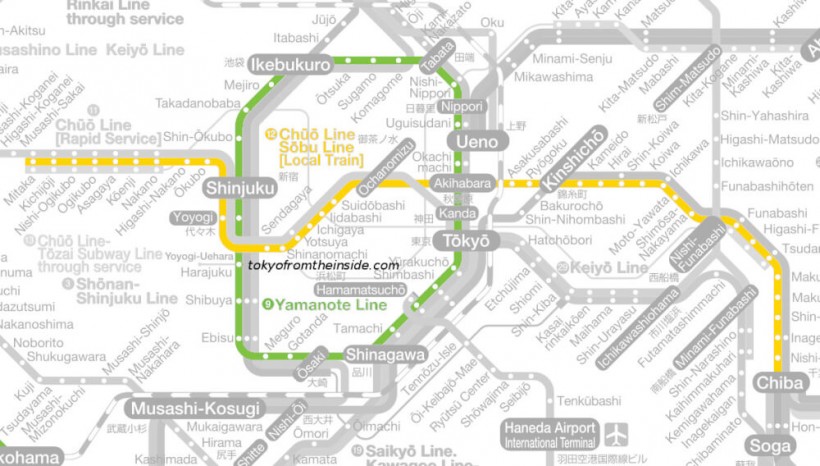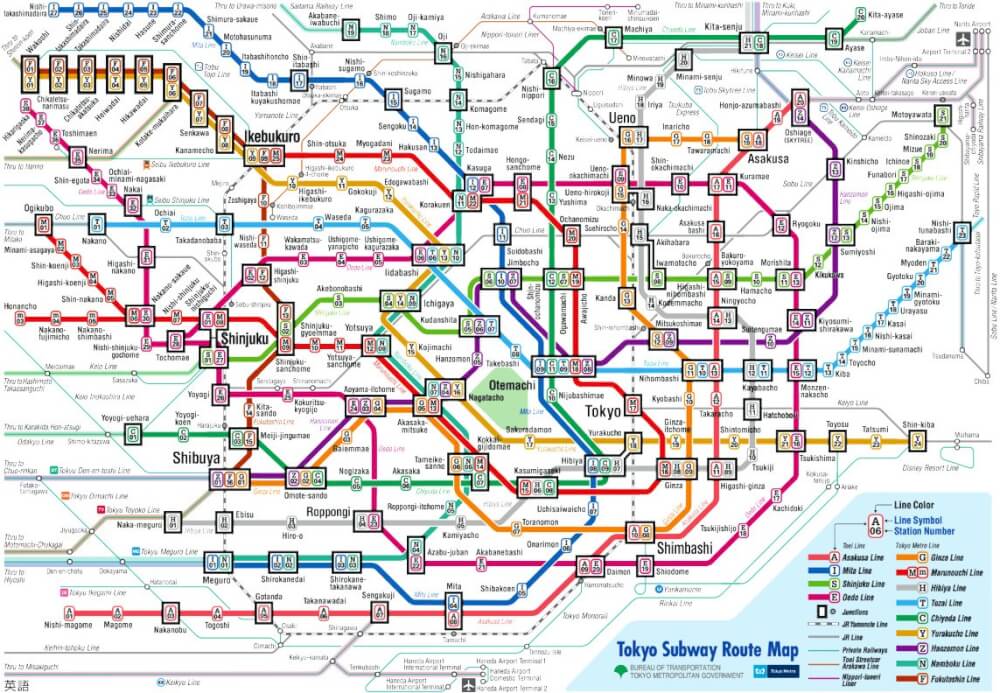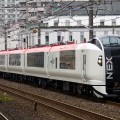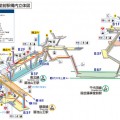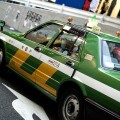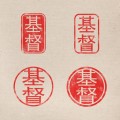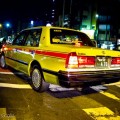…and that was the simplified map of the subway and rail system in downtown Tokyo. If you had looked at the map and thought to yourself “that’s all?”, good for you. If your jaw dropped or you started hyperventilating, hopefully this article would help calm you down.
We will begin by exploring the train network before moving on to info on routing and passes.
1. Railways and subways are different
This may be clear to some but not everyone is aware of the differences between railway trains and subway trains.
For a lack of better word, I tend to describe railway trains as ‘surface’ trains. These are typically trains that cover a long route (even across prefectures) and are found on the ‘surface’. Most suburban areas are served by railway trains. For short distances, railways tend to be cheaper than subways.
Subway trains, on the other hand, run underground. Well… in the case of Tokyo, most of the time (for example, the Marunouchi subway line runs on the surface for part of its journey). These train are mainly for commuting in and around the city center.
In many countries and cities, the railway and subway systems are generally separate but in Tokyo, there is a little bit of confusion because subway trains sometimes carry on as railway trains at the end of their line. You can read more about this in point 3.
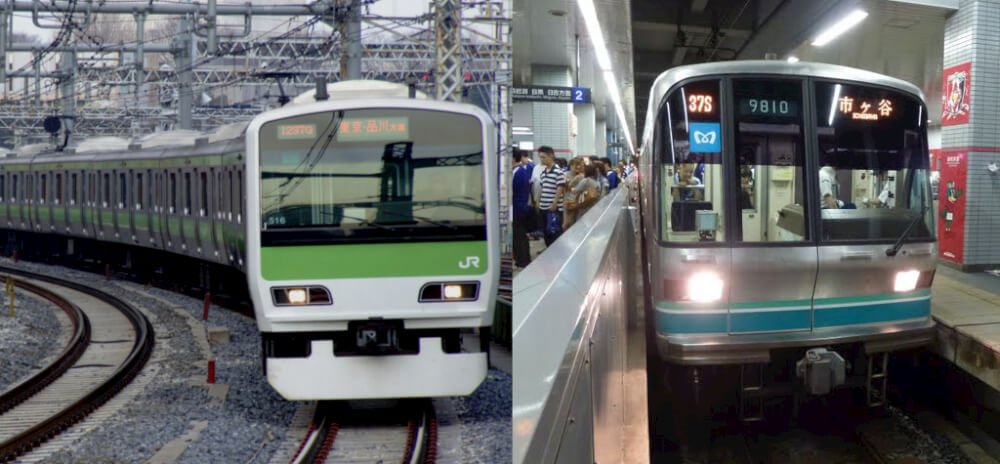
2. Different companies and lines in Tokyo
Next, we need to distinguish between a line and a train company. A single train company may run multiple lines (or routes). For example, the Toei Subway company runs 4 train lines.
Why the need for this distinction? Because you usually pay for tickets at a fix rate for trains of the same company (even if you switch lines), but have to pay more if you transfer to another company’s line. In other words, if you want to save money, if possible, stick to only switching trains between lines belonging to the same company. Not to mention that it is usually less troublesome (e.g. no need to exit gantries) to do so.
Below is a list of railways, subways and private/special train companies and their lines in Tokyo:
| Railway Companies (9) | Subway Companies (2) | Private / Special Lines (2) |
| JR East | Toei | Tokyo Waterfront Area Rapid Transit (Rinkai) |
| Seibu | Tokyo Metro | Tokyo Waterfront New Transit Corp (Yurikamome) |
| Tobu | ||
| Keisei | ||
| Odakyu | ||
| Tokyu | ||
| Keio | ||
| Tsukuba Express |
JR East is the biggest passenger train company in the world and is also one of the more important companies if you are travelling by train in Tokyo. If you are on the JR Rail Pass, your trips on JR East lines are also covered. In particular, the Yamanote Line and the Chuo-Sobu Line are widely-used.
The Yamanote Line is a circular line that makes stops at busy/popular areas such as Shinjuku, Shibuya, Shinagawa, Ikebukuro, Ueno, Akihabara and Tokyo. The Chuo-Sobu Line complements the Yamanote Line by cutting through the middle of the ring and extending from Mitaka to Chiba stations.
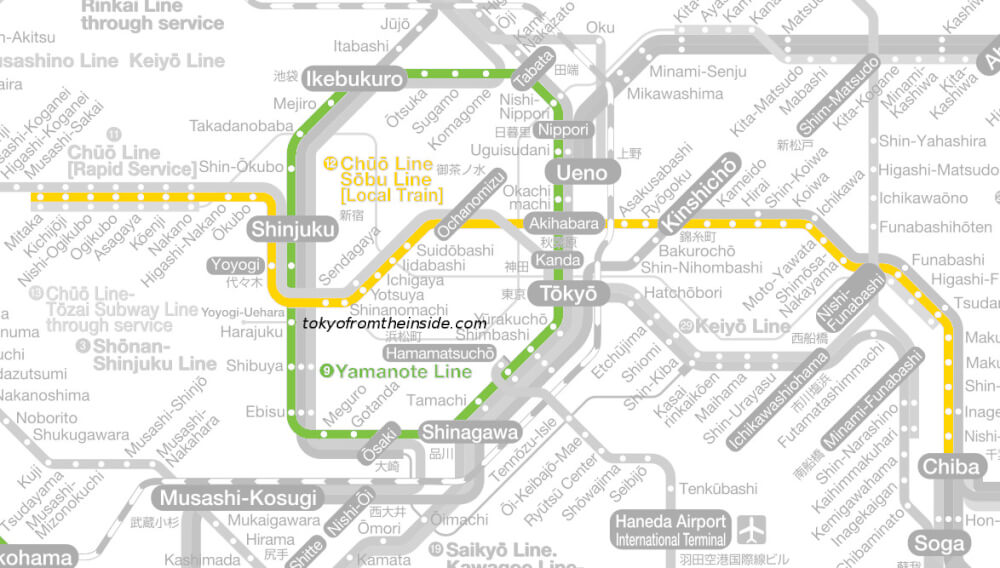
If you find yourself needing to get somewhere not covered by the railway trains above, you will likely have to use the subway. As listed previously in the table, the two main companies are Toei Subway and Tokyo Metro. To refresh your memory, switching lines belonging to different companies will cost you more money. Each subway line in Tokyo in given a roman letter to represent the line. To make things easy, remember the following:
- Toei Subway has 4 lines and has a logo that looks like a green umbrella
- Tokyo Metro has 9 lines and has a logo that is an ‘M’ on a blue background
- Toei Subway lines form the word EASI (E = Oedo, A = Asakusa, S = Shinjuku and I = Mita)
- Only Toei Subway lines are represented by vowels! Besides ‘S’, all other consonants belong to Tokyo Metro!

We have covered three of the most important train companies for Tokyo. Other useful ones include:
- Odakyu – for travel to Kanagawa (e.g. Hakone)
- Seibu – for travel to Saitama and western Tokyo
- Keisei – for travel to Narita airport and Chiba Prefecture
- Keikyu – for travel to Haneda airport
- Tobu – for travel to Nikko (Tochigi Prefecture)
- Tsukuba Express – for travel to Tsukuba (Ibaraki Prefecture)
- Tokyo Waterfront companies – for travel around the Odaiba and Tokyo Bay area
3. ‘Transforming’ Trains (Through Services)
To be more precise, subway trains that carry on a “through service” as other railway lines after reaching their terminal. Or if you look at it from another point of view, suburban railway trains that temporarily become subways while running on the subway lines within the city.
A useful thing to know because you can save precious time by waiting for the right train and traveling right through to the next line without transferring (there are sometimes transfer fees though). To pick the right train, you should look out for destination of trains (and hence deduce their route) on signboards in stations and on the trains themselves.
Some examples:
- Nanboku (N) line starts as the Saitama Rapid Railway Line until Akabane-Iwabuchi station. Once it reaches Meguro station, it becomes the Tokyu Meguro Line (bound for Hiyoshi station).
- Similarly, the Mita (I) line becomes the Tokyu Meguro Line once it reaches Meguro station.
- The Asakusa (A) line may becomes the Keisei Oshiage Line (at Oshiage station) or Keikyu Main Line (at Sengakuji Station)
Sounds complicated? Below is a visual explanation of the Saitama Rapid / Nanboku / Meguro through service:
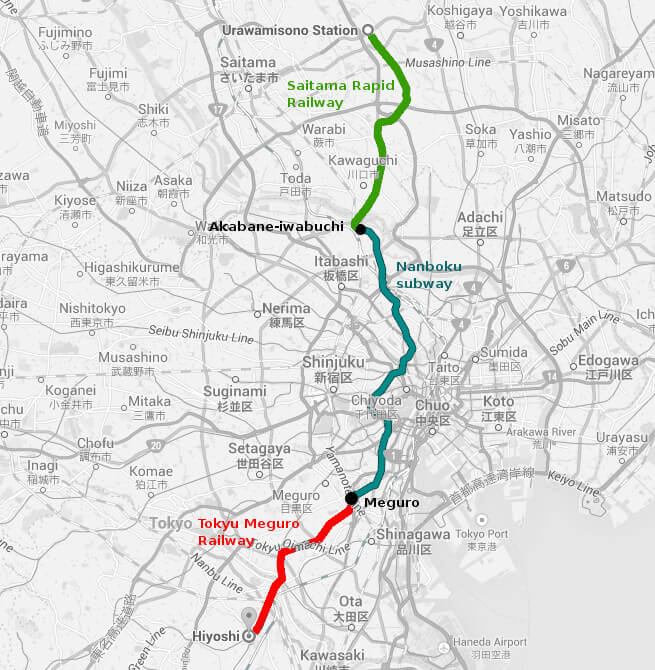
4.Express Services
Express services are faster by virtue of the fact that they skip stations. Hence, the fastest express services also service the least stations. Not unexpectedly, the stations that are skipped tend to be minor stations. Generally speaking, express services are more crucial for suburban railways and people using through services, as subway stations are seldom skipped. A few lines such as the Fukutoshin (F), Shinjuku (S), Asakusa (A) and Tozai (T) subway lines have express services that skip subway stations.
Below is the list of terms of express services most commonly used in Tokyo:
| Express level (least to most) | Japanese term | Comments |
| Local train | 各駅停車 – kakuekiteisha | Not express. Stops at every station |
| Rapid | 快速 – kaisoku | Not to be confused with the faster “rapid express” |
| Section semi-express | 区間準急 – kukan-junkyuu | |
| Semi-express | 準急 – junkyuu | |
| Express | 急行 – kyuukou | |
| Rapid Express | 快速急行 – kaisoku | |
| Limited Express | 特急 – tokkyuu | Fastest for normal railway. May cost extra. |
| Super Express | 超特急 – choutokkyuu | Typically for shinkansens and only operated by JR |
*Do note that not all train lines will have all the above-listed express services and some train lines have their own custom express services like “Romance Car Limited Express”, “Tama Express” or “Rapid Rabbit”. This is especially the case for the Chuo Line which has a variety of rapid services.
Using part of the Odakyu Line as an example (below), between Shinjuku and Noborito stations, the local train stops at every station (17 in total). The semi-express stops at 12 stations while the express service only stops 5 times.
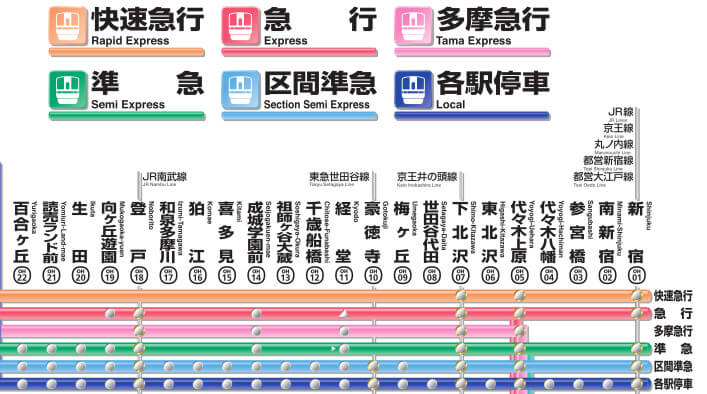
5. Special seats
Special seats are typically available for long-haul journeys such as shinkansen rides.
- Smoking carriages are sort of a thing of the past and the best that you can do is to have seat in the cabin with smoking compartments found on shinkansens.
- “Green cars” are the equivalent of first-class seating on trains and require the purchase of Green Car Tickets either using a machine or a ticket counter.
- “Reserved seating” means that you are given a fixed seat, and hence are assured of a seat. This almost always costs extra money.
